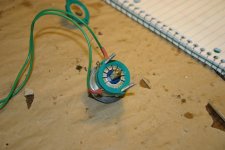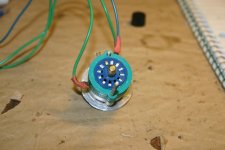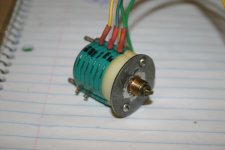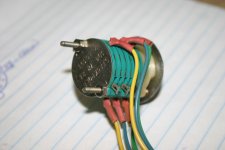Well, I finished up the heat sinks and re-assembled the pass transistor cage. The power supply is as clean as I'm going to get it. It's not perfect but it's a LOT better than when I started. Getting the pass transistor cage in and out of the power supply is not difficult, but there was evidence of punched wires. So when I put the cage back I was careful, yet I still had one pinch I had to fix. I also replaced all the jacks and plugs J1-J7.

When I was replacing J6, I inspected the front key switch and it was broken. It would turn, but was hard.
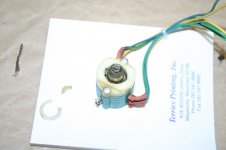
Apparently, it must have been struck from the front somehow and the top plastic where the brass rod goes through was broken out. So I opened up the switch and found that three wafers that hold the contacts were either broken or cracked.
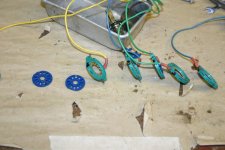
I started to look for a replacement, but that didn't result in anything, beside what I was looking at was in the expense side. So, I decided to try and repair this switch. I figured that some crazy glue would repair the wafers, but how to fix the front cover? I thought of trying to mold something or fill the broken part off, but that usually never results in a firm repair. I decided to make a small steel plate to fit over the cover and attach the brass shaft bushing to it. Then replace the rivets with bolts.
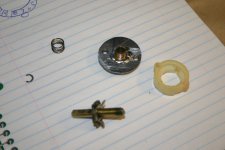
I soldered the brass bushing to the steel doughnut after cleaning and lubing it. The shaft is held in place with a 'C' clip. Just underneath the cover there are two ball bearing balls that provide the 3 position 90º stops. Once lubed up it worked well.
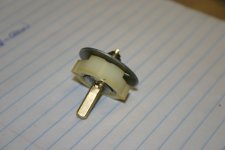
Mike

![IMG_0311[1].jpg IMG_0311[1].jpg](https://forum.vcfed.org/data/attachments/21/21157-0863d5802212b0a45c037ba502aa4765.jpg)





